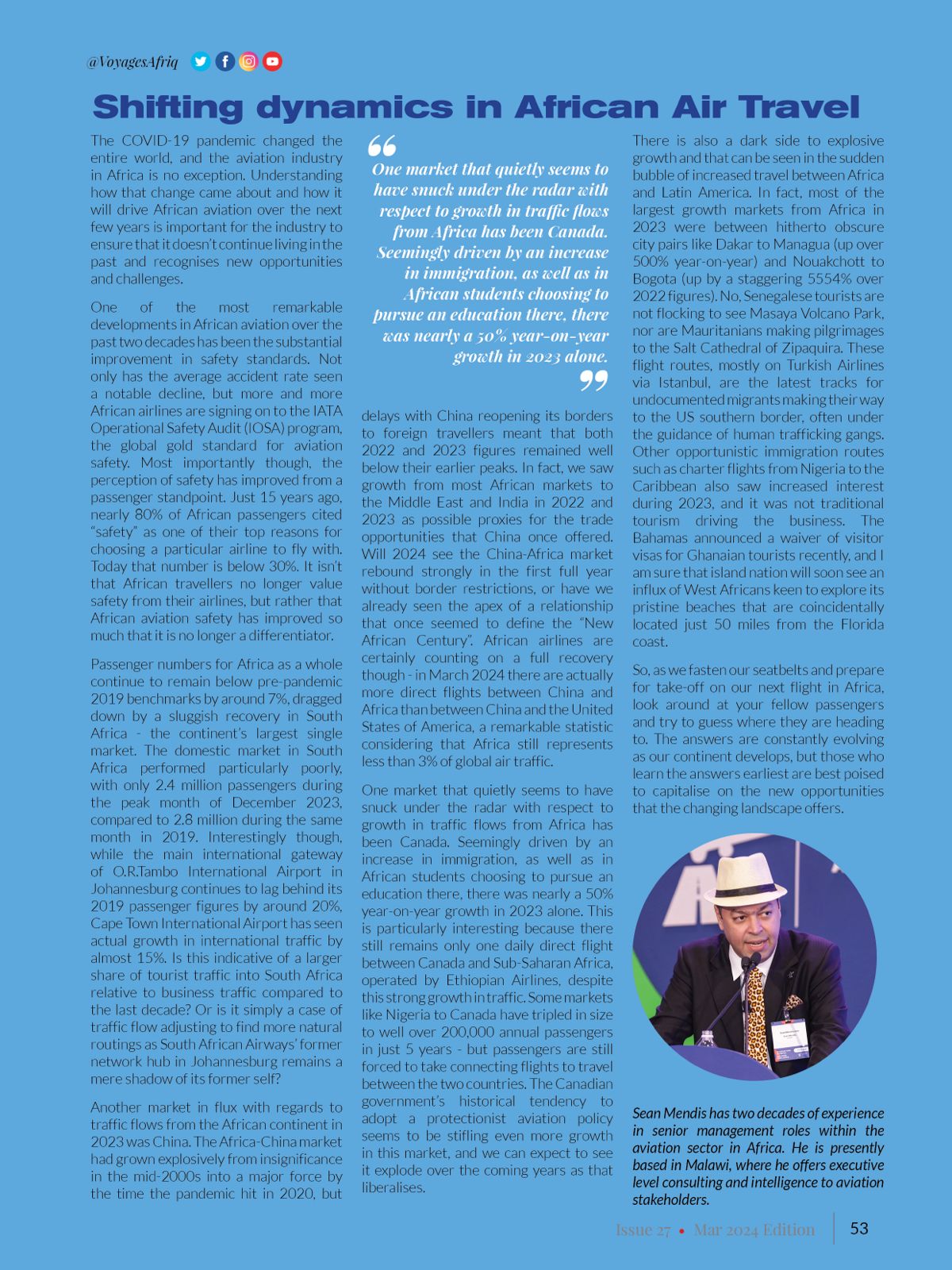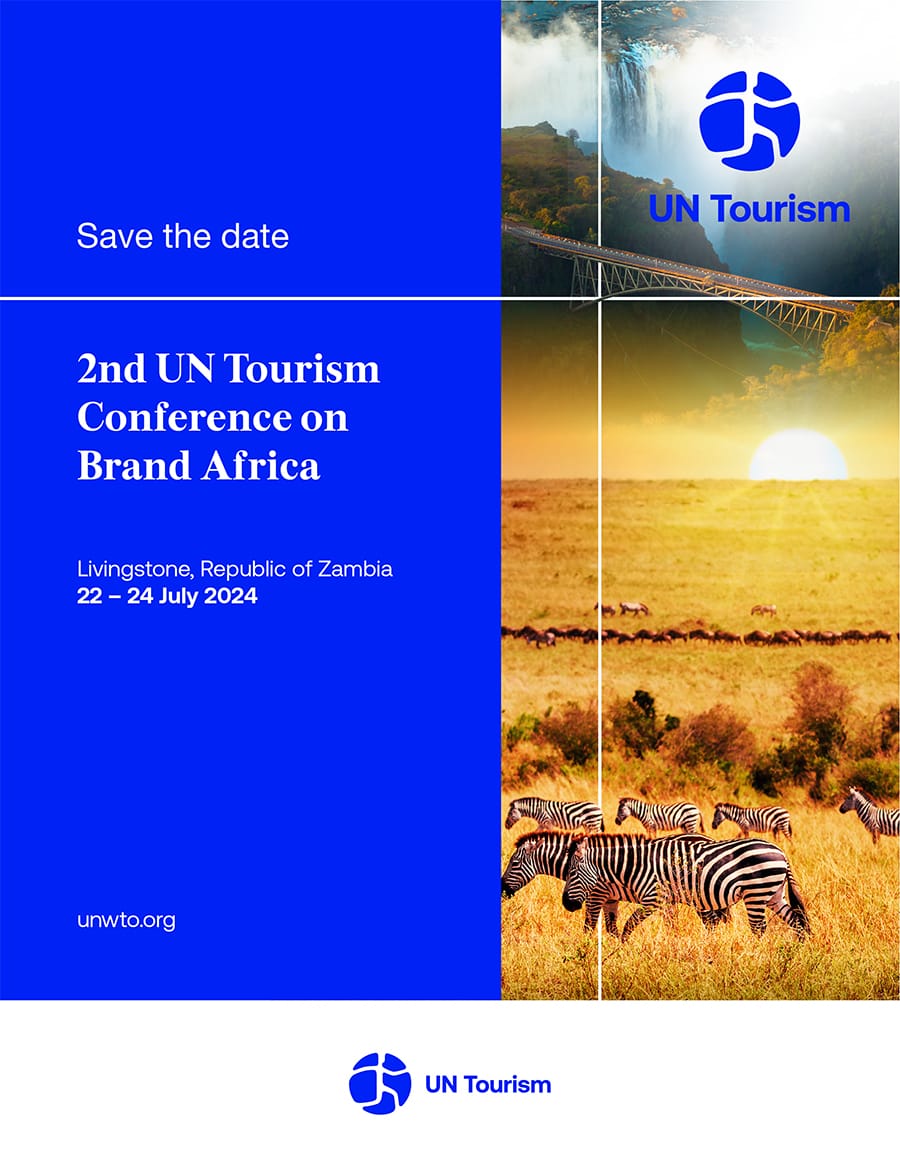The COVID-19 pandemic changed the entire world, and the aviation industry in Africa is no exception. Understanding how that change came about and how it will drive African aviation over the next few years is important for the industry to ensure that it doesn’t continue living in the past and recognises new opportunities and challenges.
One of the most remarkable developments in African aviation over the past two decades has been the substantial improvement in safety standards. Not only has the average accident rate seen a notable decline, but more and more African airlines are signing on to the IATA Operational Safety Audit (IOSA) program, the global gold standard for aviation safety. Most importantly though, the perception of safety has improved from a passenger standpoint. Just 15 years ago, nearly 80% of African passengers cited “safety” as one of their top reasons for choosing a particular airline to fly with. Today that number is below 30%. It isn’t that African travellers no longer value safety from their airlines, but rather that African aviation safety has improved so much that it is no longer a differentiator.
Passenger numbers for Africa as a whole continue to remain below pre-pandemic 2019 benchmarks by around 7%, dragged down by a sluggish recovery in South Africa – the continent’s largest single market. The domestic market in South Africa performed particularly poorly, with only 2.4 million passengers during the peak month of December 2023, compared to 2.8 million during the same month in 2019. Interestingly though, while the main international gateway of O.R.Tambo International Airport in Johannesburg continues to lag behind its 2019 passenger figures by around 20%, Cape Town International Airport has seen actual growth in international traffic by almost 15%. Is this indicative of a larger share of tourist traffic into South Africa relative to business traffic compared to the last decade? Or is it simply a case of traffic flow adjusting to find more natural routings as South African Airways’ former network hub in Johannesburg remains a mere shadow of its former self?

Another market in flux with regards to traffic flows from the African continent in 2023 was China. The Africa-China market had grown explosively from insignificance in the mid-2000s into a major force by the time the pandemic hit in 2020, but delays with China reopening its borders to foreign travellers meant that both 2022 and 2023 figures remained well below their earlier peaks. In fact, we saw growth from most African markets to the Middle East and India in 2022 and 2023 as possible proxies for the trade opportunities that China once offered. Will 2024 see the China-Africa market rebound strongly in the first full year without border restrictions, or have we already seen the apex of a relationship that once seemed to define the “New African Century”. African airlines are certainly counting on a full recovery though – in March 2024 there are actually more direct flights between China and Africa than between China and the United States of America, a remarkable statistic considering that Africa still represents less than 3% of global air traffic.
One market that quietly seems to have snuck under the radar with respect to growth in traffic flows from Africa has been Canada. Seemingly driven by an increase in immigration, as well as in African students choosing to pursue an education there, there was nearly a 50% year-on-year growth in 2023 alone. This is particularly interesting because there still remains only one daily direct flight between Canada and Sub-Saharan Africa, operated by Ethiopian Airlines, despite this strong growth in traffic. Some markets like Nigeria to Canada have tripled in size to well over 200,000 annual passengers in just 5 years – but passengers are still forced to take connecting flights to travel between the two countries. The Canadian government’s historical tendency to adopt a protectionist aviation policy seems to be stifling even more growth in this market, and we can expect to see it explode over the coming years as that liberalises.
There is also a dark side to explosive growth and that can be seen in the sudden bubble of increased travel between Africa and Latin America. In fact, most of the largest growth markets from Africa in 2023 were between hitherto obscure city pairs like Dakar to Managua (up over 500% year-on-year) and Nouakchott to Bogota (up by a staggering 5554% over 2022 figures). No, Senegalese tourists are not flocking to see Masaya Volcano Park, nor are Mauritanians making pilgrimages to the Salt Cathedral of Zipaquira. These flight routes, mostly on Turkish Airlines via Istanbul, are the latest tracks for undocumented migrants making their way to the US southern border, often under the guidance of human trafficking gangs. Other opportunistic immigration routes such as charter flights from Nigeria to the Caribbean also saw increased interest during 2023, and it was not traditional tourism driving the business. The Bahamas announced a waiver of visitor visas for Ghanaian tourists recently, and I am sure that island nation will soon see an influx of West Africans keen to explore its pristine beaches that are coincidentally located just 50 miles from the Florida coast.
So, as we fasten our seatbelts and prepare for take-off on our next flight in Africa, look around at your fellow passengers and try to guess where they are heading to. The answers are constantly evolving as our continent develops, but those who learn the answers earliest are best poised to capitalise on the new opportunities that the changing landscape offers.
Sean Mendis has two decades of experience in senior management roles within the aviation sector in Africa. He is
presently based in Malawi, where he offers executive level consulting and intelligence to aviation stakeholders.
This Article was first published in the March 2024 (Issue 027) of VoyagesAfriq Travel Magazine








